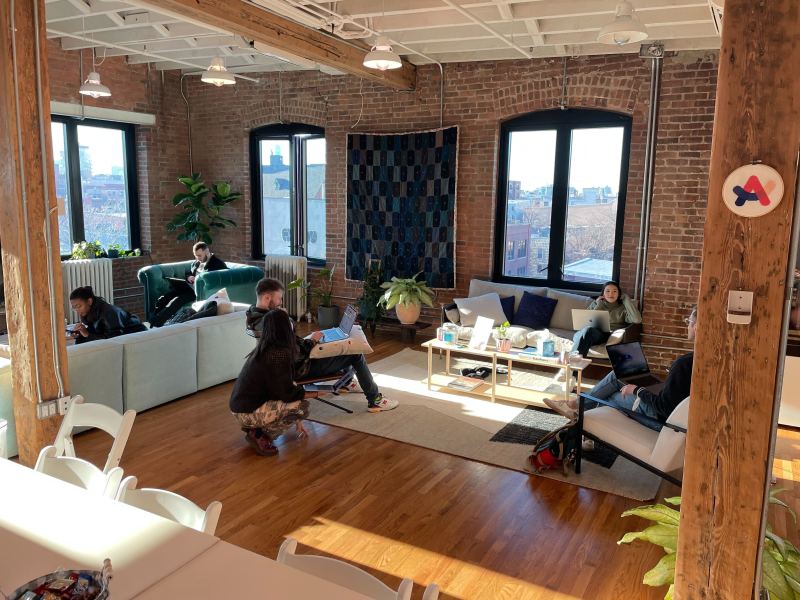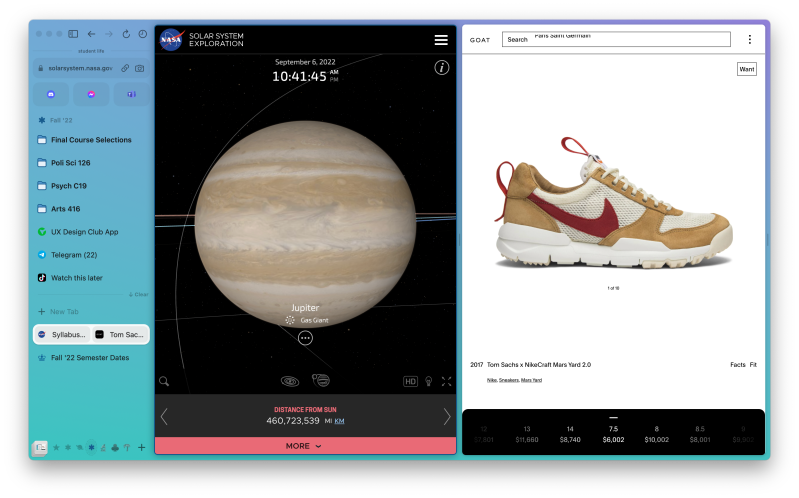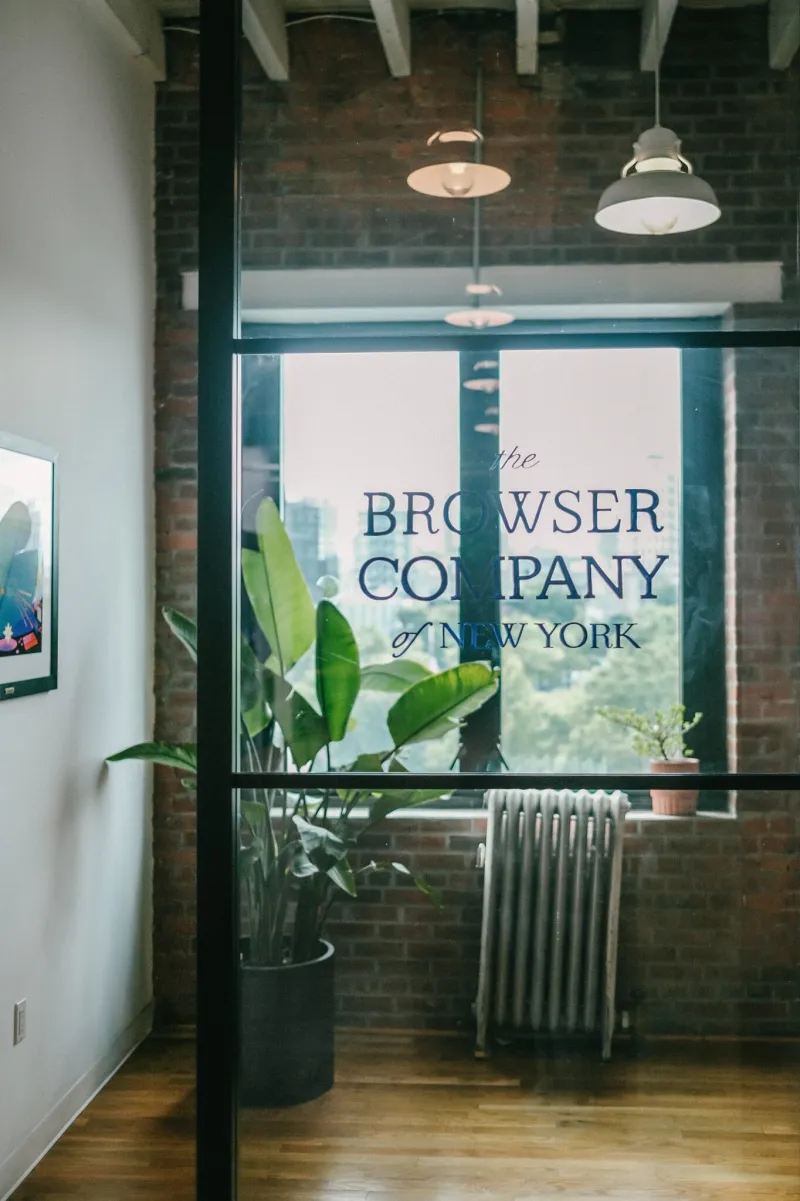“When was the last time your browser made you giggle or smile?”
According to Josh Miller, CEO and co-founder of The Browser Company, this question is what led to the creation of Arc, a new browser that he says is reimagining what computer screens should look like. Several Stanford graduates now work at the company, and some current students are beta testers for the browser.
Many internet users never exit their web browser, instead closing their computer screens rather than their tabs, according to Miller. Even though browsers are the most used app on computers, most browsers have not undergone any major changes since their conception, staff said.
“The idea was that we’re spending eight hours a day in these gray, drab rectangles that are web browsers and doing all this stuff,” Miller said. “It’d be nice to care about [your browser] and feel like it’s fun and beautiful and powerful, instead of just being like ‘Where is that tab again and which window is it?’”
Unlike other browsers, where users can open different tabs and windows, Arc has features that help users organize and simplify their Internet experience, according to Miller. Their most noticeable feature is its ability to combine apps and websites into one interface. Instead of clicking a link to open email in a new window, Arc allows its users to simply open email — no new tab, no pop-up page, no opening of a different app.
The company is a startup with only around 40 employees, but The Browser Company views its biggest competition as the major browsers such as Google Chrome, Microsoft Edge and Apple’s Safari.
“The fact that we are so small, and we don’t have all of these big competing incentives that these big tech companies have, gives us an advantage in some ways,” said product engineer Rosey Eisenbrand ’19, who used to work at Instagram. “We’re able to just ship features and make changes to the product based on our product intuition and what our members are telling us, rather than being beholden to a certain business metric or something like ads.”

A big difference between Arc and its competitors is their differing values, according to Miller. Unlike big tech companies, Arc does not sell advertisements and automatically blocks ads and trackers by default.
“We don’t have an ad-based business model,” Miller said. “We’re not trying to look at all your private data and sell it to whatever company.”
“What we’re trying to stay focused on is how do we make your day on the Internet less stressful, less disorganized, less messy,” Miller added. “Our bet is that if we focus on that, just making your day on the Internet more awesome and powerful, that’s how we’re going to beat the other big browser companies, because they’re much more focused at this stage on pleasing their shareholders.”
Miller said that Arc also places an emphasis on creativity in tech design, rather than solely focusing on utility and efficiency — a key distinction for the browser seen through its modern and customizable look in contrast to typical browsers’ default gray.
“I think it’s really nice to customize it, and I have different colors and textures for all of them, which is fun,” said Crystal Chen ’24, a former Daily editor who has used Arc for about a month. “Whenever I share my screen on Zoom, people are like, ‘That’s so cool, what app is that?’”
Another way Miller says Arc resolves the frustration with having so many tabs open is with Spaces, a feature that allows users to organize different parts of their lives into separate pages. Instead of having multiple windows and tabs, users can now swipe between their “spaces” and focus on one topic at a time, whether that be school, work, sports or any other interest.
A new feature in the works in Arc is shareable folders. Arc users will be able to create a folder of links in the browser’s sidebar that can be shared with other Arc users. According to product designer Dara Oke, who is leading the shareable folder project, “I think we are approaching the entire prompt of what it means to be browsing with other people, and this is one part of it, something that feels bolder and feels more intuitive.”

Nikki Chan, who was one of Arc’s earliest users and who works as the vice president of customer experience at Looking Glass, a company that develops holographic displays and software, has been looking forward to the implementation of shareable folders in Arc.
“I work in my team of five people here at my company, so it’s very common that I’ll create a bookmark for our community team,” Chan said. “I’ve been talking about wanting to share my folders with other people.”
While the waitlist to download Arc’s beta version is long, students and educators can bypass the waitlist by using their Stanford email to gain instant access to Arc by going to students.arc.net. Arc will move out of beta testing and be available to the public early next year, according to Miller.
“The value for students is that no matter what, you have to get stuff done in a browser and you need a structure that supports you in that rather than complicating the process,” said Ben Cunningham ’10, who works in engineering and design at The Browser Company.
Cunningham credits Stanford with preparing him for the world of technology and start-ups. According to Cunningham, the environment at Stanford prepared him with the “energy and ambition and belief” that made him successful in the industry.
“The thing I like most about Stanford and the thing that I’ve carried with me since [graduation] is this incredibly amount of energy and persistence and ambition that lots of students bring with them before Stanford but being in there, you soak it up like a sponge and it really cements this idea that you can do whatever you want to do.”
